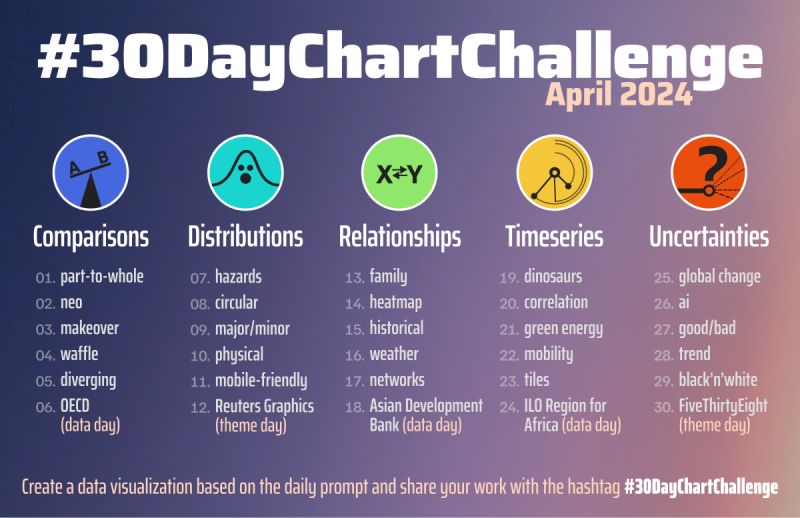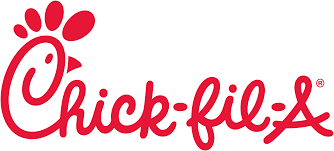Part-to-whole Chick-Fil-A Menu Items
Quick primer on the #30DayChartChallenge

The #30DayChartChallenge is a data visualisation community activity that I found out via Linkedin. Every day for the month of April 2024 has a key word prompt (see image above). For each prompt, participants all around the world come up with an original data visualisation to share.
On a whim, I decided to participate in this challenge as I think it’s a great way try something new, better understand my tools and engage with a vibrant community.
Given that this is very much a last-minute decision, I’ll choose to use Python libraries that I am familiar with. polars has already completely replaced pandas for my data manipulation needs and lets-plot is one of my favourite ggplot2 ports in Python.
Data Prep
I have heard rumours of Chick-Fil-A looking to open it’s 1st outlet in Singapore (source), so I was inspired to make a visualisation to show the component parts of the major macro-nutrients - Protein, Carbohydrates and Fat for its popular menu items. I figure this should help me decide what I should spend my calories on when it first opens 😋.
It took a bit of a search, but as always TidyTuesdays has a suitable dataset for my needs.
I planned to create a stacked bar chart so we need to manipulate the dataframe into a tidy-longer form.
Things I Learnt
- Lets-plot has a unique method
as_discrete()to reorder categorical values, analogous toreorder()inggplot2Docs - It’s really difficult to move my plot title to the left-margin of the plot instead of the axis due to the lack of a parameter like
ggplot2’splot.title.positionbut it’s coming soon https://github.com/JetBrains/lets-plot/issues/1027
Reuse
Citation
@online{tan2024,
author = {Tan, Daniel},
title = {Part-to-Whole {Chick-Fil-A} {Menu} {Items}},
date = {2024-04-01},
url = {https://www.ddanieltan.com/posts/30-day-chart-1},
langid = {en}
}
